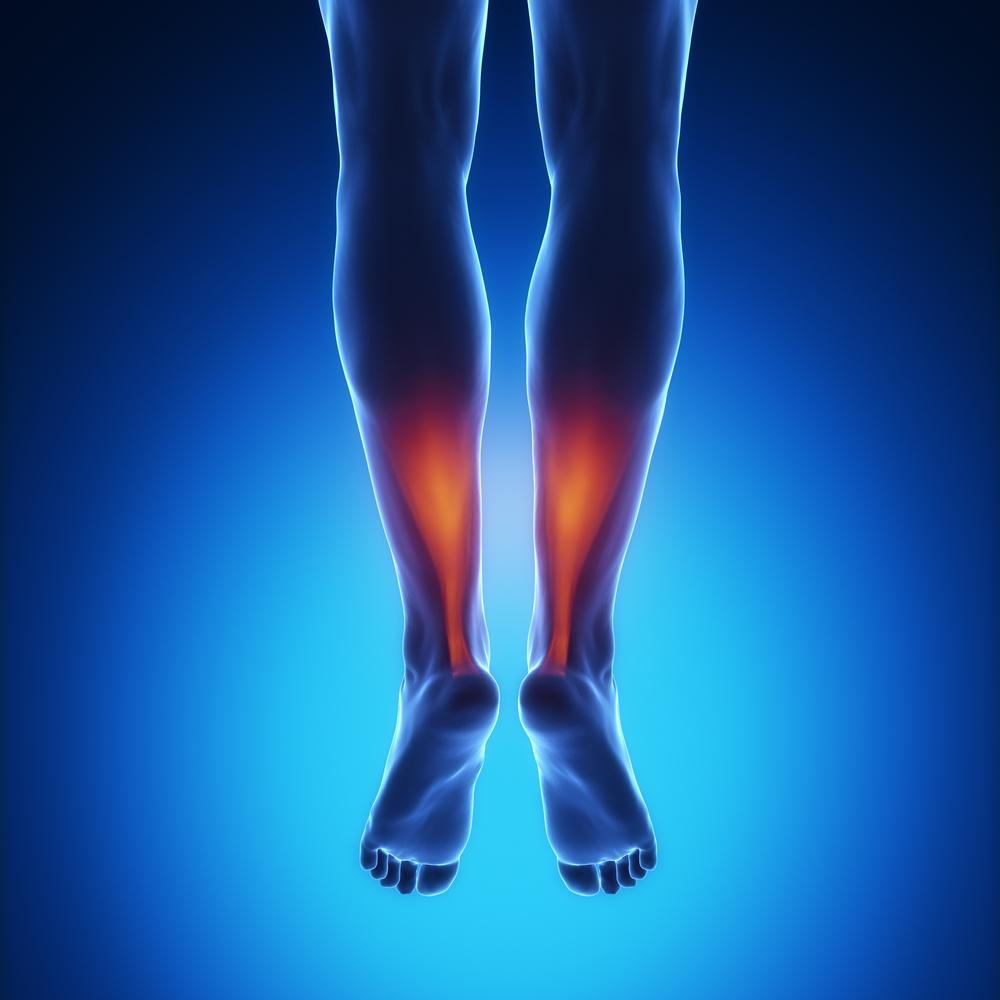 The Achilles tendon is located in the back of the leg, connects the calf muscles to the heel, and is the most frequently injured tendon in the body. A torn or ruptured Achilles tendon can happen as a result of suddenly twisting the leg during a sporting activity and occurs more often in athletes. Common symptoms that many patients experience can include swelling, difficulty walking, and a popping sound may be heard at the time of the injury. After a proper diagnosis is made, which generally consists of having an MRI taken, the healing process can begin. In severe cases, surgery may be necessary to repair the torn tendon. If you have endured an Achilles tendon injury, it is strongly recommended that you seek the expert advice of a podiatrist who can find the correct treatment for you.
The Achilles tendon is located in the back of the leg, connects the calf muscles to the heel, and is the most frequently injured tendon in the body. A torn or ruptured Achilles tendon can happen as a result of suddenly twisting the leg during a sporting activity and occurs more often in athletes. Common symptoms that many patients experience can include swelling, difficulty walking, and a popping sound may be heard at the time of the injury. After a proper diagnosis is made, which generally consists of having an MRI taken, the healing process can begin. In severe cases, surgery may be necessary to repair the torn tendon. If you have endured an Achilles tendon injury, it is strongly recommended that you seek the expert advice of a podiatrist who can find the correct treatment for you.
Achilles tendon injuries need immediate attention to avoid future complications. If you have any concerns, contact one of our podiatrists of The Foot and Ankle Associates of North Carolina, PLLC. Our doctors can provide the care you need to keep you pain-free and on your feet.
What Is the Achilles Tendon?
The Achilles tendon is a tendon that connects the lower leg muscles and calf to the heel of the foot. It is the strongest tendon in the human body and is essential for making movement possible. Because this tendon is such an integral part of the body, any injuries to it can create immense difficulties and should immediately be presented to a doctor.
What Are the Symptoms of an Achilles Tendon Injury?
There are various types of injuries that can affect the Achilles tendon. The two most common injuries are Achilles tendinitis and ruptures of the tendon.
Achilles Tendinitis Symptoms
- Inflammation
- Dull to severe pain
- Increased blood flow to the tendon
- Thickening of the tendon
Rupture Symptoms
- Extreme pain and swelling in the foot
- Total immobility
Treatment and Prevention
Achilles tendon injuries are diagnosed by a thorough physical evaluation, which can include an MRI. Treatment involves rest, physical therapy, and in some cases, surgery. However, various preventative measures can be taken to avoid these injuries, such as:
- Thorough stretching of the tendon before and after exercise
- Strengthening exercises like calf raises, squats, leg curls, leg extensions, leg raises, lunges, and leg presses
If you have any questions, please feel free to contact one of our offices located in Ahoskie, Durham, Raleigh, and Rocky Mount, NC. We offer the newest diagnostic and treatment technologies for all your foot care needs.

